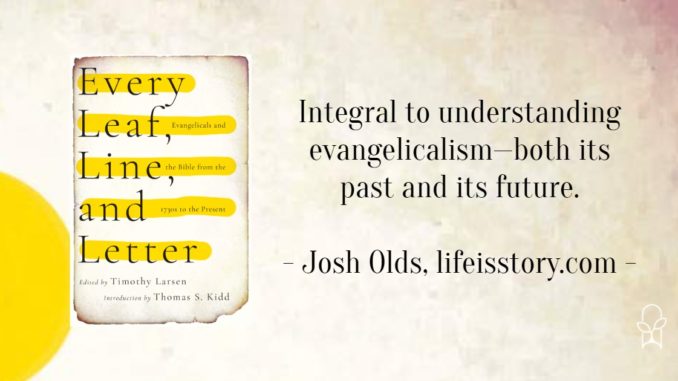
Also by this author: Every Leaf, Line, and Letter: Evangelicals and the Bible from the 1730s to the Present, The Scandal of the Evangelical Mind, C. S. Lewis in America: Readings and Reception, 1935–1947
Published by IVP Academic on May 4, 2021
Genres: Academic, Non-Fiction, Theology
Buy on Amazon
Goodreads

I was filled with a pining desire to see Christ's own words in the Bible. . . . I got along to the window where my Bible was and I opened it and . . . every leaf, line, and letter smiled in my face. --The Spiritual Travels of Nathan Cole, 1765 From its earliest days, Christians in the movement known as evangelicalism have had a particular regard for the Bible, to borrow a phrase from David Bebbington, the historian who framed its most influential definition. But this biblicism has taken many different forms from the 1730s to the 2020s. How has the eternal Word of God been received across various races, age groups, genders, nations, and eras? This collection of historical studies focuses on evangelicals' defining uses--and abuses--of Scripture, from Great Britain to the Global South, from the high pulpit to the Sunday School classroom, from private devotions to public causes. Contributors:
David Bebbington, University of Stirling Kristina Benham, Baylor University Catherine Brekus, Harvard Divinity School Malcolm Foley, Truett Seminary Bruce Hindmarsh, Regent College, Vancouver Thomas S. Kidd, Baylor University Timothy Larsen, Wheaton College K. Elise Leal, Whitworth University John Maiden, The Open University, UK Mark A. Noll, University of Notre Dame Mary Riso, Gordon College Brian Stanley, University of Edinburgh Jonathan Yeager, University of Tennessee at Chattanooga
The Bible says it. I believe it. And that’s good enough for me. This was a common phrase I heard growing up in the Church of Christ—a staunchly evangelical denomination born out of the Restoration movement that heavily contrasts with Charismatic and Pentecostal strains of faith that rely more on personal revelation. The Bible is God’s Word. It’s simple to understand. It’s incredibly clear. As I grew, I learned to question that phrase. Not in sense of the first question ever asked “Did God really say…?” but in the sense of “Am I hearing God correctly? Am I interpreting the revelation he’s left me in a faithful and accurate way?”
Christians are people of the book, and evangelicals even more so. Every Leaf, Line, and Letter is a historical overview of how evangelicals have treated the Bible—both positively and negatively—since evangelicalism first developed as a distinct form of Christianity in the early 1700s. Under the guidance of editor Timothy Larsen, twelve different highly-respected evangelical scholars working within their academic specialties treat readers to a thorough and robust look at evangelicalism’s relationship with Scripture.
Every Leaf, Line, and Letter is divided into four parts, each covering a particular century. The twentieth century is particularly put into focus with about a third of the book covering that era. While every essay is strong, the three most striking for myself was K. Elise Leal’s chapter on children’s Bible culture in the 19th century, Mary Riso’s sketch of Josephine Butler’s life, and Timothy Larsen’s discussion of liberal evangelicals and their use of Scripture in the 20th century.
Taken together, the book covers a wide swath of evangelical identity from the very broad (see Brian Stanley’s chapter on the evangelical mind in global context) to the very narrow (Riso’s chapter on one individual, Josephine Butler). There’s so much that could be written that it’s actually refreshing to see that Every Leaf, Line, and Letter—perhaps ironically—did not attempt to cover every leaf, line, and letter in its historical overview but rather shifts between broad and narrow narratives in an attempt to weave a cohesive theme and bring nuance and depth to the conversation.
Simply for its diversity of perspectives alone, Every Leaf, Line, and Letter can be commended for bringing depth and nuance to a conversation that, at the popular level, hasn’t had much depth. This work is integral to understanding evangelicalism—both its past and its future. Each chapter could well have been worked into a book in its own right. Written to an academic audience, it can be a bit heady at times but the authors remain clear and accessible throughout. Whether as a church history text or simply for the layperson wanting to know more about evangelical history, Larsen and company have provided a text that will undoubtedly prove influential.



